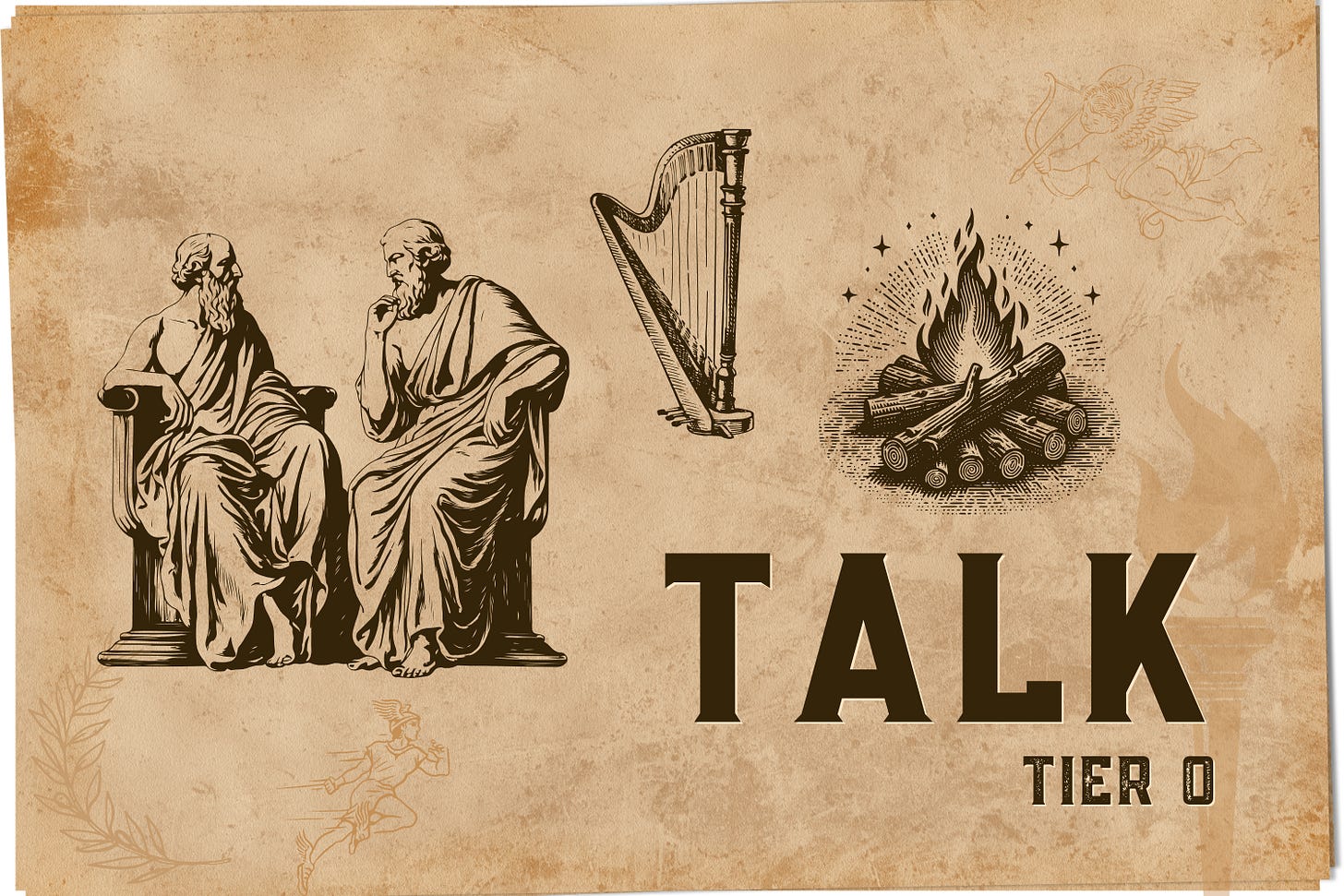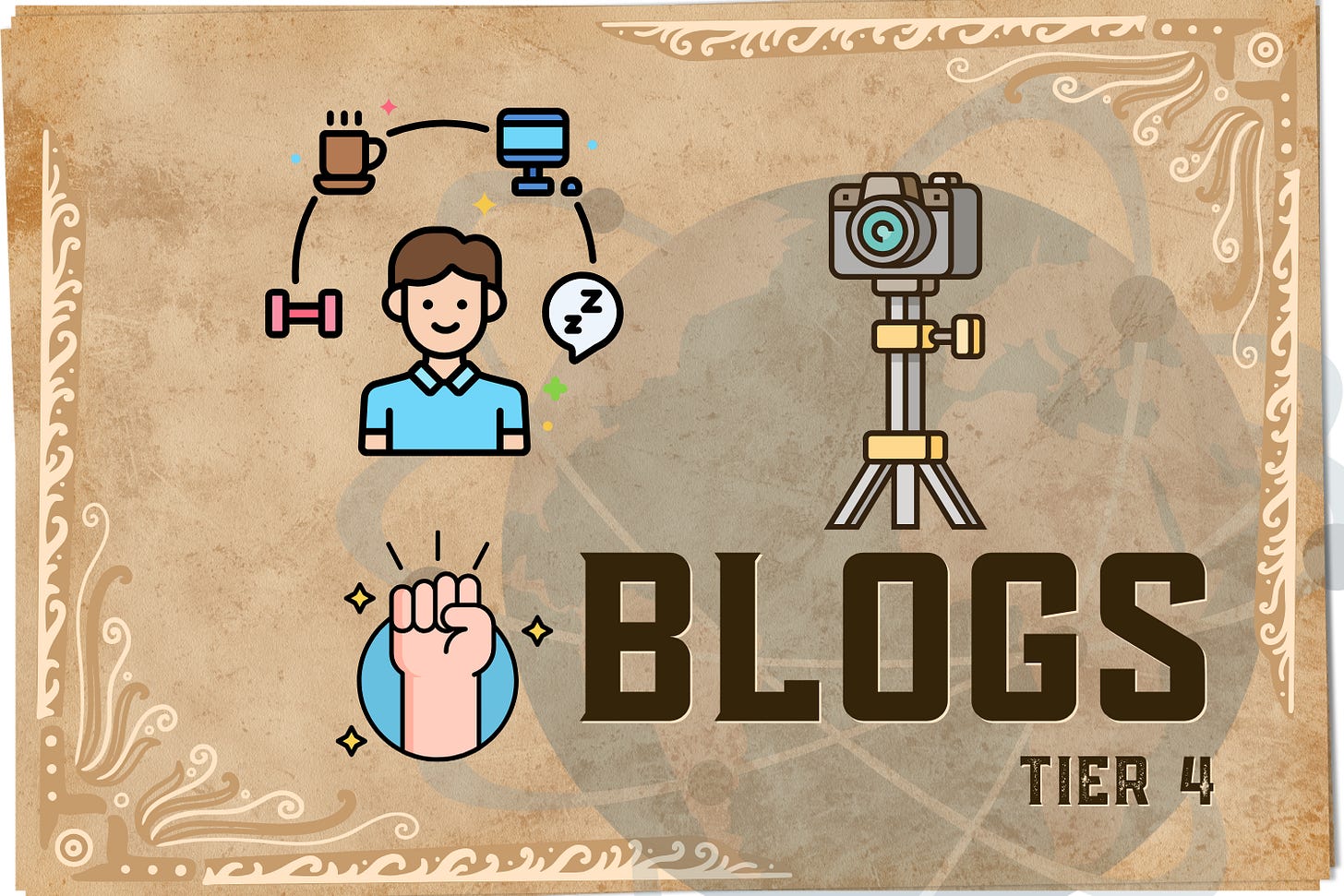The Tech Tree That Made Us Dumber
How decades of communication “upgrades” accidentally broke our ability to process information—and the simple practice that fixes it.
The Collective Human Problem - Our Tech is Killing Us
There's a strange paradox in modern life: we have instant access to all of human knowledge, yet it’s never been harder to think clearly. We carry supercomputers in our pockets, but our attention spans feel shorter than ever. We were promised a world of information, and we got it—but it feels more like a flood than a library.
How did we get here? It didn't happen overnight. To understand our current state of distraction, it helps to look at the history of communication not as a random series of events, but as a kind of technology tree. Each new invention was an upgrade that unlocked new ways to share ideas, but many came with hidden costs.
We eagerly adopted tools that promised to make us smarter and more connected—from the printing press to the social media feed. But with each step forward, we seem to have accidentally traded away something essential: our ability to focus, process information deeply, and separate the signal from the noise.
This is a journey through that tech tree to see exactly where we went wrong. More importantly, it’s a guide to the simple, surprisingly low-tech practice that can help us reclaim our focus. The solution isn't another app or a new device; it's a fundamental skill we've forgotten.
🧠 The Communication Tech Tree
To understand our present, we must walk through the past.
Let's look at the history of how we share ideas like a tech tree. Each unlock changed how we share ideas. Some upgrades made things faster. Others made things louder.
Each upgrade unlocked powerful new abilities. But each upgrade also changed the way we think and relate to information, they came with unforeseen consequences, leading us to our current state of overload.
Tier 0: Spoken Word (Local Chat Only)
People communicated by talking and listening.
This is the baseline, the default setting for our species. This was how human communicated for nearly all of our history.
Knowledge was social. It was stored in memory and passed down through stories, debates, and songs. Information could only travel as fast as a person could walk. A community's library was its elders. Since there was no permanent record, mistakes were easily forgotten, allowing for freer conversation.
Benefits:
Discussion refines ideas in the open. You don't just declare a thought--you test it.
Meaning gets negotiated. Disagreements get clarified.
Learning becomes collaborative, not isolated.
And crucially: mistakes disappear.
What you said in a moment of confusion isn't archived forever.
Like Snapchat before it became a feed, ephemerality is very forgiving.
Tier 1: Writing (Asynchronous Messaging Unlocked)
The first great leap: we captured words.
Now messages can travel across time and space. Ideas persist. Thought can be stored and refined. Memory is concrete.
For the first time, an idea could outlive its creator and travel across the world. This allowed for complex laws, history, and science to be built upon previous work. Thinking could now be a private act of drafting and editing. We outsourced memory to scrolls and books.
Tier 2: Printing Press (Mass Duplication)
This upgrade was about scale. It took the written word and made it massive. Copying text becomes cheap. Books, laws, and revolutions spread faster. Civilization levels up.
A single idea could now reach thousands of people quickly, fueling mass movements like the Reformation and Scientific Revolution. It helped create the idea of nations, built around a common printed language. This was the first information flood; the challenge shifted from finding knowledge to choosing what was worth reading.
Tier 3: Forums & Message Boards (Topic-Sorted Group Threads)
Internet mode: People gather around shared interests. Public threads = early multiplayer. Ideas get organized by topic, not identity.
What changed: Anyone could publish text for a global audience, with conversations organized by topic.
What it meant: You could find your tribe based on a shared interest, not your location. Unlike a book, it was an interactive conversation. On many forums, your ideas mattered more than your real-world identity, creating a space for open debate.
Tier 4: Blogs (Creator-Led Publishing)
Blogging tools let anyone create their own personal publication, a stream of thought organized by author.
The focus shifted from the topic to the individual.
Now info is sorted by person. You follow individuals, not just categories.
The personal brand unlocks. Content becomes identity-driven.
This created a new kind of trust—you relied on a person you respected to filter the world for you. It also made a person’s public thoughts a key part of their identity and reputation.
Tier 5: Social Media (Real-Time Feeds, Notification Flood)
This tier introduced the algorithmic feed, which now runs our information lives.
What changed: A machine decides what you see, prioritizing whatever will keep you hooked. Publishing became frictionless. Conversation is always on, an endless stream. Everyone posts. Platforms boost whatever grabs attention: outrage, novelty, clickbait.
What it meant:
Your attention became the product being sold to advertisers.
Feeds reward reaction, not reflection. Outrageous news and novelty spread fastest. Clickbait thrives. We are trained to perform for likes, not to communicate clearly.
Result: noise, fatigue, and lost context. Most of us are scrolling, not reading.
Tier 6: Newsletters (Inbox Curation)
This was a rebellion against the feed, an attempt to reclaim control.
Instead of chasing the algo feed, you move away from social media with toxic algorithms (X) and consciously curate your human-picked feed. Now we subscribe to creators and publications again. It feels quieter, more intentional.
Some people moved back to email, some did a readwise feed. The key here is subscribing directly to creators to get information without an algorithm in the middle deciding what you should read.
What it meant: Initially, this provided a quieter, more intentional space. But success created a new kind of noise: inbox overload. To compete, many newsletters adopted the feed's attention-grabbing tactics. Now, instead of reading deeply, most of us just triage our inbox, managing a flood of content we never truly engage with.
Current Solution: People auto-skim or use AI to summarize. Consuming without engaging because the read-it-later apps don’t allow easy commenting.
⚠️ The Next Unlock Is Not a Tool - It's a Practice.
We are in the information age. We don't need more information. We need better curation and focused attention.
The next step is reading with intention:
Choose texts consciously, not just reactively. Avoid the feed, but also avoid the inbox. Read when you have a question.
Annotate, don't just skim. Read with a pen in hand, and an annotating app open, if not your printer ready. (I just bought the Kobo Libra Color because of it’s annotation features, shall update you on how it goes.
Use tools like Zettelkasten to think outside your head. Take advantage of our advancements. Write to Think.
Let the information flood benefit you. This is your context. Do a pre-reading step of immersing yourself in info from a dozen different perspectives to set up mental model scaffolding (Elizabeth Filips calls this context broadening).
Remember: Some of our sharpest thinking happens out loud. Talk. Debate. Be wrong in real time.
The game isn't about speed anymore. It's about depth.
And that means slowing down, on purpose.
The challenges now are:
Knowing what to pay attention to and why.
Being brave enough, to be wrong, when the internet never forgets. Fear of failure is still a thing, no matter what time we are in.












The next unlock is definitely not a tool but a practice! I think it will be knowledge practices for lifelong learners. You might be interested in the work of Bianca Periera at Lifelong Learners Paradise. I’ve been a member of her community for a while.